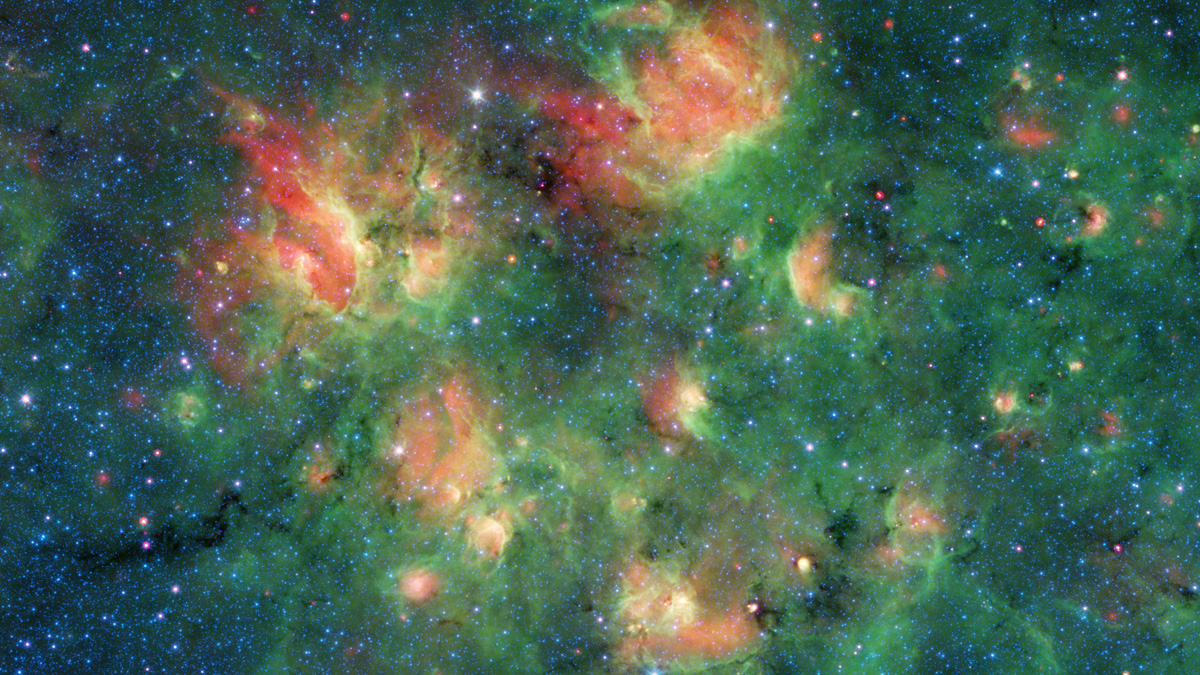
Astronomers have imaged a region of the Milky Way using the Spitzer Space Telescope and have observed beautiful bubbles surrounding clusters of young stars. This region in the constellation of Aquila (The Eagle) is full of young stars, with new stars being born when dense clouds of dust and gas come together under gravitational pressure to form the core.
There are more than 30 bubbles shown in the image above, which you can see as the pockets of red and yellow. Each bubble corresponding to a cloud of thousands of stars which is 10 to 30 light-years across. It’s hard to know the exact size of the bubbles due to their distance from us, but astronomers have made estimations using previous knowledge of bubbles.
The bubbles are formed by stellar winds, which are bursts of energy that are generated when a star is born. These winds are composed of flows of material which is thrown out from a star when it forms, pushing away other nearby dusts and gases. Together with the light produced by stars, the stellar winds exert pressure on surrounding materials, creating a perimeter that forms the bubble.
The Spitzer Space Telescope images in the infrared light spectrum, looking for light waves that are invisible to the human eye. In the image, different wavelengths of light are represented by different colors, so the red is warm dust heated by nearby stars, green is dust and hydrocarbons, and blue is light emitted by the stars themselves. The black “veins” are streaks of dense, cold gas and dust which block out light and which are the regions most likely to form new stars.
The advantage of observing on the infrared spectrum is that Spitzer can see things that would be impossible to see in the visible light range. Visible light is easily blocked by dust, of which there is a lot around young stars. Infrared light can pass through some of the dust to reach us here on Earth, allowing us to peer deeper into the cosmos.



